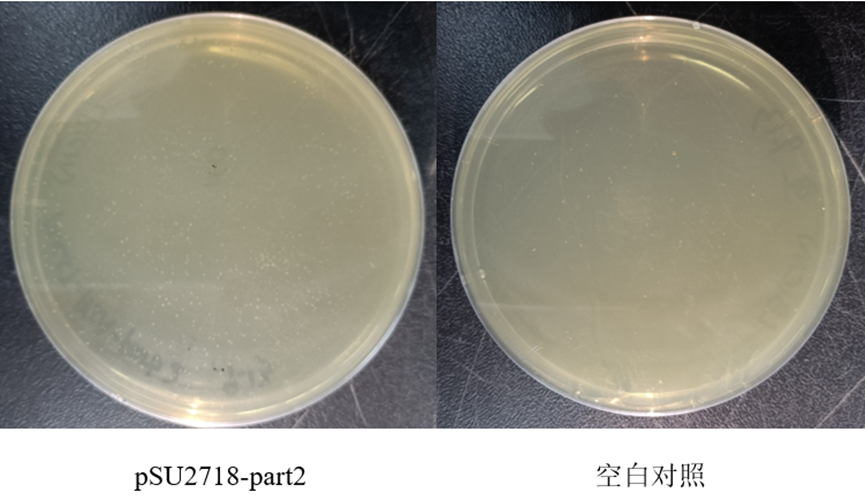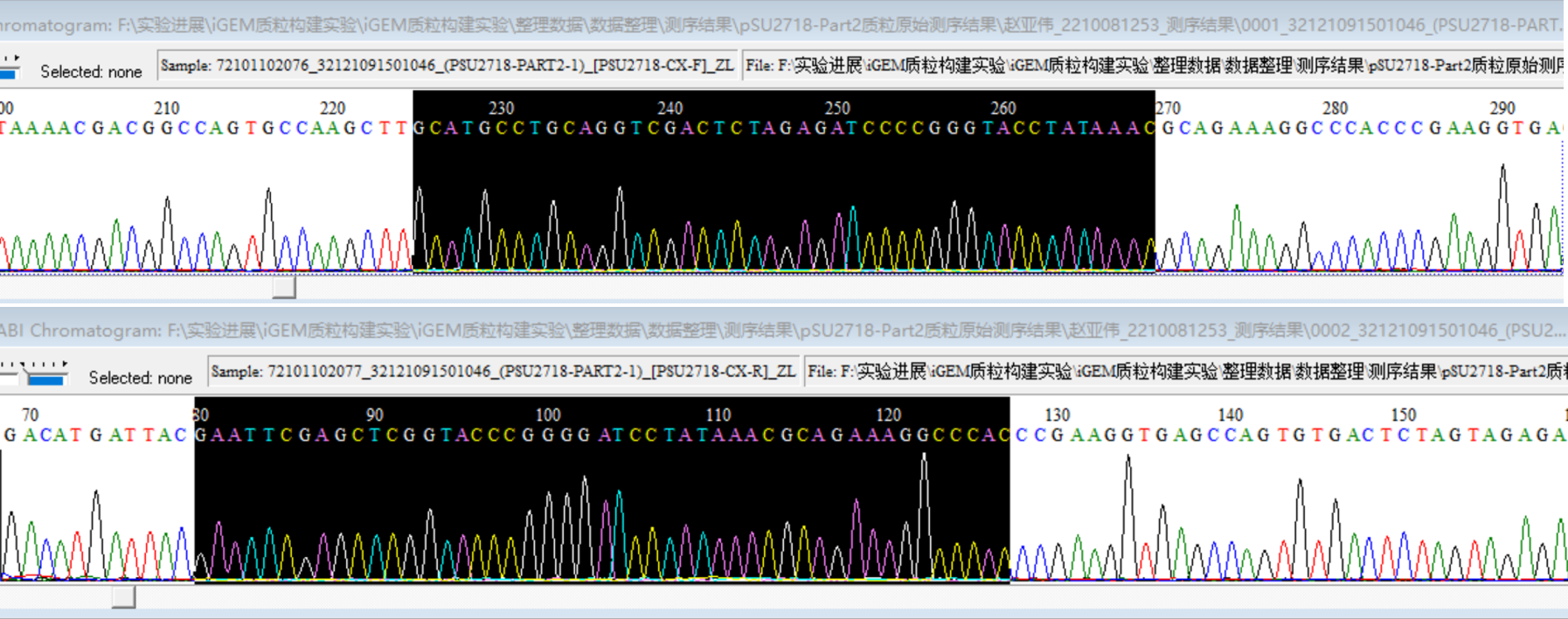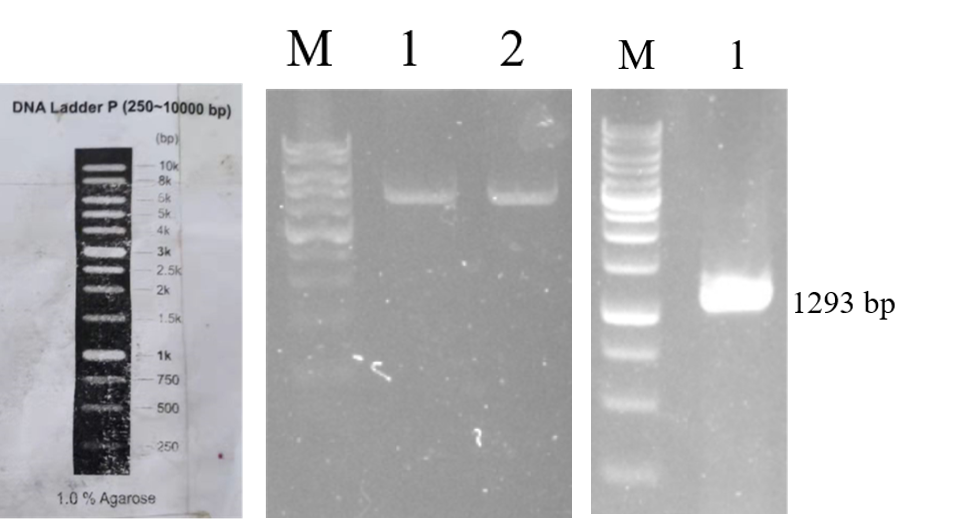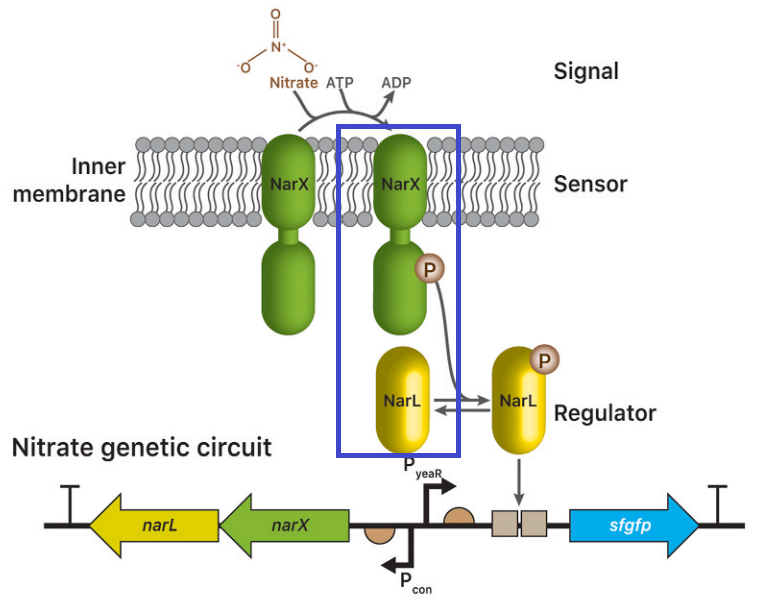Part:BBa_K3994011
PyeaR_HrpR+PttB344_HrpS_PJ23105_ttrR+PhrpL_amilGFP_IL10_PJ23104_ttrS
promoter
Profile
Name: PyeaR_HrpR+PttB344_HrpS_PJ23105_ttrR+PhrpL_amilGFP_IL10_PJ23104_ttrS
Base Pairs: 7494 bp
Origin: Synthetic
Properties: A biosensor releasing fluorescence only when detecting the IBD marker.
Usage and Biology
Background
Inflammatory bowel disease (IBD) is a chronic intestinal inflammatory disease of unknown etiology, including ulcerative colitis (CD) and Crohn’s disease (CD). This chronic disease, which is prone to repeated deterioration, currently lacks unified diagnostic and treatment standards, and is posing a great threat to public health. Drug therapy (anti-inflammatory drugs) is the preferred treatment for IBD. However, studies in the past 10 years have found that 30-50% of IBD patients do not respond to anti-TNF treatment. In addition, after long-term use of anti-inflammatory drugs, the patient's intestinal microbial status changes over time, and the effect may be lost due to drug resistance. Therefore, we need to seek help from other treatments for IBD.
Construct design
We can build Boolean logic circuits to combine thiosulfate/tetrasulfate and nitrate biosensors to optimize performance, improve sensor accuracy and enhance robustness, and optimize intestinal inflammation detection (Figure 1). When and only when S2O32-/S4O62- and NO3- are present at the same time, the fluorescent gene is expressed (Figure 1). The fluorescent gene can be replaced with a gene that produce the interleukin-10 (anti-inflammatory factor) for the treatment of IBD. HrpS is a key functional factor under PttB344 promoter. amilGFP is a fluorescent protein under PhrpL promoter. IL10 is an anti-inflammatory factor.
Part1: PyeaR_HrpR, sensing NO3- then release the substance R;
Part2: PttB344_HrpS_PJ23105_ttrR, sensing S4O62- then release the substance S;
Part3: PhrpL_amilGFP_IL10_PJ23104_ttrS, will release fluorescence if sensing both the substances, R and S released from Part 1(HrpR) and Part 2 (HrpS) , respectively.
The profiles of every basic part are as follows:
BBa_K3994003
Name: HrpS
Base Pairs: 912bp
Origin: Pseudomonas syringae, genome
Properties: A coding sequence of HrpS protein
Usage and Biology
This codes for HrpS protein. HrpR protein binds to HrpS protein forming a complex and then triggering the transcription of promoter hrpL. This functions like a AND logic gate.
BBa_K3994012
Name: PttB344
Base Pairs: 85bp
Origin: Synthetic
Properties: A coding sequence of promoter ttB344.
Usage and Biology
This is a sequence of PttB344. PttrB185-269 is a minimal TtrR activated promoter when TtrR is phosphorylated by TtrS after TtrS sensing tetrathionate.
BBa_K3994005
Name: PhrpL
Base Pairs: 190bp
Origin: Synthetic
Properties: A coding sequence of promoter hrpL.
Usage and Biology
It is the sequence of inducible promoter PhrpL. HrpR protein binds to HrpS protein forming a complex and then triggering the transcription of induced promoter PhrpL. It functions like a AND logic gate to open a gene circuit. The hrpL promoter (PhrpL) contains a functional UAS relative to the transcription start-site, to which purified HrpR, HrpS and HrpRS bind in electrophoretic mobility shift assays.
BBa_K3994006
Name: IL10
Base Pairs: 864bp
Origin: Homo sapiens, genome
Properties: A coding sequence of an immune regulatory cytokine
Usage and Biology
This is a coding sequence of IL10. This is a major immune regulatory cytokine that acts on many cells of the immune system where it has profound anti-inflammatory functions, limiting excessive tissue disruption caused by inflammation.
Experimental approach
Recombinant Plasmid Construction
Lane 1 and 2: Plasmid pSU2718-p15A digested by Xba1 and BamH1.
Lane 3: Part 2, PttB344_HrpS_PJ23105_ttrR, got by PCR method with size of 2060bp.
This step is used to get the plasmids pSU2718-p15A digested by enzyme Xba1 and BamH1and gene PttB344_HrpS_PJ23105_ttrR by PCR method for later in the process. Therefore, channel 1 and 2 were plasmids pSU2718-p15A digested by enzyme Xba1 and BamH1. And channel 3 were gene PttB344_HrpS_PJ23105_ttrR got by PCR. Clean-up the product to obtain pSU2718-p15A backbone and PttB344_HrpS_PJ23105_ttrR-fragment. T4 DNA ligase is used to connect pSU2718-p15A backbone and PttB344_HrpS_PJ23105_ttrR-fragment to get plasmid pSU2718-part2.
Lane 1: Plasmid pSU2718-p15A digested by EcoR1.
Lane 2 to 5: Recombinant plasmid pSU2718-part2 digested by EcoRI. We got two bands with size of 2803bp and 1544bp.
The results show that we got the correct plasmid. And the plasmid was sent to sequence.
Sequencing feedback shows we have obtained the correct plasmids which is consistent with their DNA profiles.
Middle:
Lane 1 and 2: Plasmid pSU2718-part2 digested by HindIII.
Right:
Lane 1: Part 1, PyeaR_HrpR, got by PCR method with size of 1293bp. This step is used to get the plasmids pSU2718-part2 digested by enzyme and gene PyeaR_HrpR by PCR method for later in the process. Therefore, channel 1 and 2 (Middle) were plasmids pSU2718--part2 digested by enzyme HindIII. And channel 1 (Right) was gene PyeaR_HrpR got by PCR. Clean-up the product to obtain pSU2718-part2 backbone and PyeaR_HrpR-fragment. T4 DNA ligase is used to connect pSU2718-part2 backbone and PyeaR_HrpR-fragment to get plasmid pSU2718-part2-part1.
Lane 1: Recombinant plasmid pSU2718-part2-part1 without enzyme digestion.
Lane 2: Recombinant plasmid pSU2718-part2-part1 digested by EcoR1.
The result shows that we got the correct plasmid. And the plasmid was sent to sequence.
Sequencing feedback shows we have obtained the correct plasmids which is consistent with their DNA profiles.
Proof of function
Attempt 1
Sample 1: NO3- + S4O62-
Sample 2: S4O62-
Sample 3: NO3-
Sample 4: Blank Control
As shown above, there is obvious fluorescence in sample 1 and sample 2; for sample 3 and sample 4, there also a slight fluorescence produced in the tubes. In order to scientifically quantify the result, we used ELIASA to read the accurate fluorescence intensity, respectively.
According to the histogram above, we can see that Sample 1 (NO3-+ S4O62-) presents obvious higher fluorescence intensity than the rest three samples which means our design working. But we do realize that Sample 2 (S4O62-) also presents fluorescence than the blank control which confused us a lot. According to our design, if we only add S4O62- without NO3-, this AND gate wouldn’t allow to pass into the reporter (Part 3) as there is a closed door of the NO3- sensor (Part 1). Therefore, we thought there was something wrong in Part 1.
In order to figure out the reason, we did several literature research and find out that in Part 1 we didn’t build the NarX-NarL two-component regulator (Graph 3), which shall be the first one to sense nitrate and that is why Part 1 didn’t work fine as we expected.
Ref. Woo, Seung-Gyun, et al. "A designed whole-cell biosensor for live diagnosis of gut inflammation through nitrate sensing." Biosensors and Bioelectronics 168 (2020): 112523.
Attempt 2
Sample 1: Negative Control (E. coli)
Sample 2: Positive Control (E. coli/amilGFP)
Sample 3: E. coli/pUC-57_Part 3
Sample 4: E.coli/pSU2718-Part 1_Part 2+pUC-57_Part 3
In order to further analyze the performance of Part 2, we also designed the control groups as showing above where Sample 1 and Sample 2 were presented as the comparison of the fluorescence phenomenon. We can see that there was no fluorescence in Sample 3 (the report part, Part 3). According to the result of Sample 3 and Sample 4 (Graph 4), we could infer that the AND gate design works (HrpR_HrpS, PhrpL) as the Part 3 didn’t respond when there is no Part 1 and Part 2.
Of course, we also repeated the experiments and measured the fluorescence intensity by ELIASA. The data is given below.
According to the trend in Graph 6, the fluorescence intensity of pUC57-Part 3 presents the similar level as that of blank control and group NO3-, which means the “gate keeper” promoter, PhrpL works well and this conclusion also back up the conclusion that the AND gate design works well (HrpR_HrpS, PhrpL).
As the group S4O62 did present higher fluorescence intensity than that of group NO3- whenever OD600 equals to 0.8 or 1, it indicates that Part 2 and Part 3 both works well as Part 2 did show “green light” to the thiosulfate to finally “light” the Part 3.
Improvement of an existing part
The group NEU_CHINA 2020 designed a composite part BBa_K3611009. They connected a secondary amplifier in series on the basis of the original hrp amplifier. The extracytoplasmic functional (ECF) sigma factor ECF11_987 and promoter ECF11_3726, which were proved as a higher-gain amplifier combination, were selected to build secondary amplifier.
Our team design the new composite part BBa_K3994011, with sequence different from the old one BBa_K3611009 (Figure 17). When and only when S2O32-/S4O62- and NO3- are present at the same time, the fluorescent gene is expressed. The fluorescent gene can be replaced with a gene that produce the interleukin-10 (anti-inflammatory factor). Our new composite part BBa_K3994011 was given a completely new function, producing the interleukin-10 (anti-inflammatory factor) for the treatment of IBD.
In addition, our project can serve General Public, Hospital and Biotechnology Firms lots of industrial biofactory companies. If our IBD biosensor may enter the market, it is possible to distribute it to ordinary people who want to have a test of IBD at home. IBD diagnosis has been a challenge for hospital because of its complex and various clinical symptoms. Thus, it should always be good to equip doctors with additional methods to help them better evaluate patients’ IBD related symptoms, which may help doctors enhance their diagnosis efficiency and efficacy. If we treat our development technique as a product, it is also possible to identify biotechnology firms as our potential clients. The biotechnology firms may be willing to buy our techniques and make further optimization
Future plan
So far, we have ensured that Part 2, Part 3 and also the AND gate design work, we need to improve the design of Part 1 which is used to sense nitrate so that we could fully complete the whole biosensor construction to diagnose IBD. Besides, we also have concerns about the biosensor carrier, E. coli. Firstly, we need ensure that our engineered bacteria would not be immediately degraded or eliminated by other enteric microorganism. Secondly, E.coli may have adverse effects such as septicemia in patients with immune deficiency to the gut microbiome. In the future, safer bacteria like lactobacillus should be found as carrier receptors for transformation.
References
1 CDC -What is inflammatory bowel disease, available at: https://www.cdc.gov/ibd/what-is-ibd.htm
2炎症性肠病 百度百科available at: https://baike.baidu.com/item/%E7%82%8E%E6%80%A7%E8%82%A0%E7%97%85/5296499?fr=aladdin
3 Data and StatisticsInflammatory Bowel Disease (IBD) in the United StatesAvailable at: https://www.cdc.gov/ibd/data-statistics.htm
4. Wang, Baojun, et al. "Engineering modular and orthogonal genetic logic gates for robust digital-like synthetic biology." Nature communications 2.1 (2011): 1-9.
Sequence and Features
- 10INCOMPATIBLE WITH RFC[10]Illegal XbaI site found at 1248
Illegal XbaI site found at 1398
Illegal XbaI site found at 3288
Illegal XbaI site found at 3438
Illegal PstI site found at 1236
Illegal PstI site found at 3276 - 12INCOMPATIBLE WITH RFC[12]Illegal NheI site found at 2062
Illegal NheI site found at 2085
Illegal NheI site found at 5496
Illegal NheI site found at 5519
Illegal PstI site found at 1236
Illegal PstI site found at 3276 - 21INCOMPATIBLE WITH RFC[21]Illegal BglII site found at 3116
Illegal BamHI site found at 1254
Illegal BamHI site found at 3294 - 23INCOMPATIBLE WITH RFC[23]Illegal XbaI site found at 1248
Illegal XbaI site found at 1398
Illegal XbaI site found at 3288
Illegal XbaI site found at 3438
Illegal PstI site found at 1236
Illegal PstI site found at 3276 - 25INCOMPATIBLE WITH RFC[25]Illegal XbaI site found at 1248
Illegal XbaI site found at 1398
Illegal XbaI site found at 3288
Illegal XbaI site found at 3438
Illegal PstI site found at 1236
Illegal PstI site found at 3276
Illegal NgoMIV site found at 669
Illegal AgeI site found at 142
Illegal AgeI site found at 256
Illegal AgeI site found at 262
Illegal AgeI site found at 901
Illegal AgeI site found at 1776
Illegal AgeI site found at 2329
Illegal AgeI site found at 2335 - 1000COMPATIBLE WITH RFC[1000]
| None |



















